
Before you enter the main exhibit room for the “Jules Tavernier and the Elem Pomo” exhibit at the de Young Museum, you have the opportunity to watch a short film that introduces you to the context of the show. In the film, Elem Indian Colony of Pomo Indians tribal citizen Robert Geary, whose work you can see in the exhibit, makes a powerful statement reminding the viewers that Tavernier’s representations of his culture might be over one hundred years old, but that the Elem people are not in the past. He declares, “we are here today.”
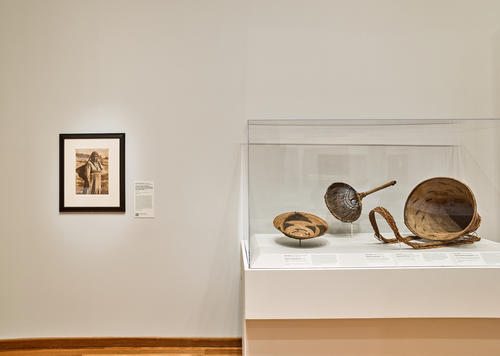
This critical reminder sets the tone for the exhibit, contextualizing the work in both the past and present. Also in the film is Sonoma County’s Dry Creek Rancheria Band of Pomo Indians member Sherrie Smith-Ferrie, who contributed greatly to the display of the Pomo basketry throughout the exhibit. Smith-Ferrie notes that the way in which basket making has changed over time reflects the changes in the community and their land. She explains that the baskets created before the 1800s were large, reflecting an abundance of natural resources. As the land was overrun by non-native people, including those who brought destructive mining practices to the region, the baskets shrunk, becoming smaller and smaller.
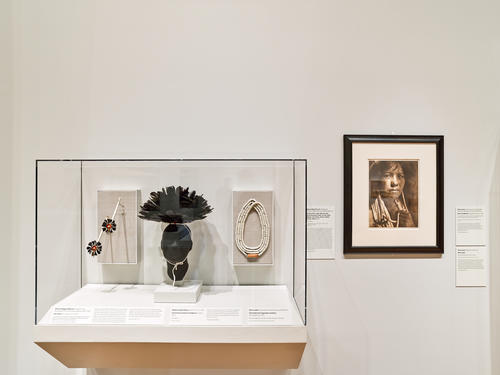
The exhibit pairs those baskets alongside Jules Tavernier’s powerful paintings. Also displayed are historic and contemporary indigenous regalia, and other relevant art pieces, including photographs by Edward Curtis. The story of the baskets helps tell the larger story of the past and present for this particular cultural group.
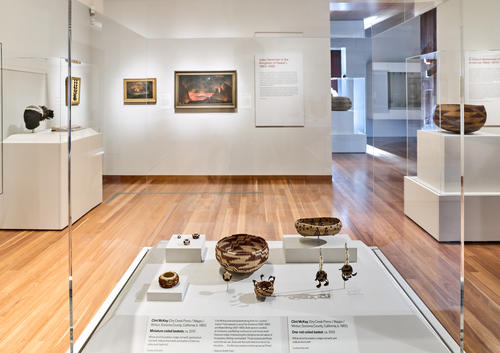
Prior to the 19th century, these baskets were made by native people for native people. Then they became popular among non-native people and native people sold their baskets to outsiders. It’s a complicated part of history. On one hand, the devastation to the land and culture is undeniable and there’s a clear story at play when non-native people come to the land, destroy it, then want to collect souvenirs from the local people to display in their homes. On the other hand, these sales also speak to the power and resiliency of the Elem Pomo people; making and selling baskets was a creative and empowering way to make money that also preserved their creative cultural traditions.
Today, though, things are different once again. The hours it takes to make a basket to sell are simply too many to translate to making a viable living. So, the Elem Pomo people are once again making baskets for themselves. These are labors of love, gifts given at special points in a member’s life. In order to make these baskets, the people have to work closely with nature, tending to the plants they use for their creations, and doing so is one way of both sustaining and celebrating their cultural traditions.
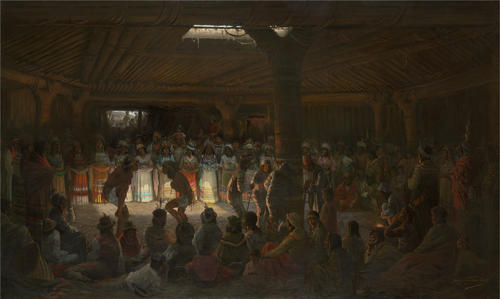
The centerpiece to the exhibition is Jules Tavernier's painting Dance in a Subterranean Roundhouse at Clear Lake, California (above). This work offers another way of looking at the complexity of the time period during which baskets went from being for daily use by the community, to becoming goods to be sold to non natives. The painting was commissioned by a banker. The ceremonial dance depicted in the painting is a newer one, one created after contact with non native people, intended to help protect the community from the threats of Western expansion and destruction of their land. This is a very private dance, a ceremony performed in the roundhouse, itself designed like a basket and constructed into the ground to protect the people from the catastrophes encroaching on their land. Tavernier depicts the movement of the dancers, the strength of the women standing behind them in full ceremonial regalia, and the power of a tradition passed down for generations. However, there are also non natives in this scene, bankers and others, and you can tell from their expressions that the experience is awkward. They are there commissioning this painting of a dance that’s done in large part to protect the people from them. It’s a complicated dichotomy, a messy part of history.
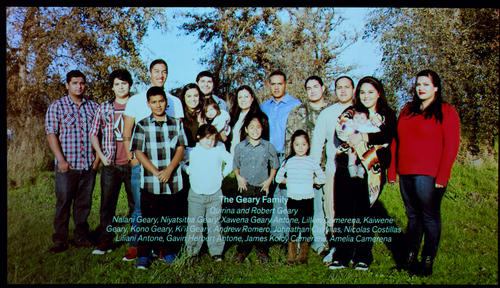
Speaking about the painting, Robert Geary shares that it could be his three-times great grandfather depicted in the image, and that overall, the work makes him happy. It depicts his culture's history - the baskets that they used, their ceremonial dress, the power of the generational knowledge that comes together in such a ceremony. And he says that, ultimately, he believes that the ceremony depicted worked, because he and his children are still here today. They still make baskets and perform ceremonial dances.
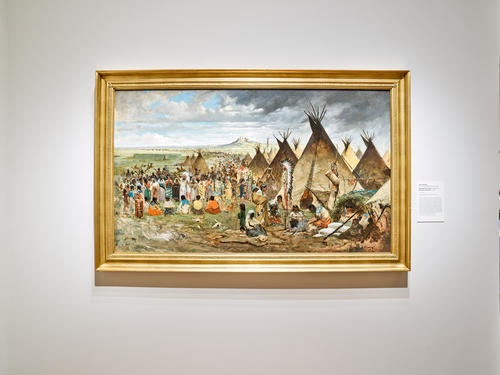
Tavernier’s work a double-edged sword, of sorts. In trying to capture a multi-day ceremony in one image, he made mistakes. The baskets that you see in the roundhouse painting would not have been in that ceremony because they were for daily use. In this and other paintings, he changed some of the stylistic details of the composition, naturally altering the full story. He was an artist who was sent to chronicle what he saw in the West, and his work is valuable as a record of that experience, but we also have to recognize the ways in which it is factually flawed, and otherwise problematic.
Compared to other artists of the time, Tavernier's inclusion of indigenous people into his landscape paintings was a powerful statement. Others frequently depicted the beautiful landscape as devoid of people, suggesting to those who were curious about the West that this land was unpopulated and ready for the taking. To some degree, his work helped to dismantle that myth, and was especially effective in conveying information to people who had never been to this part of the country. His early work was commissioned by magazines, and on display in the exhibit is an example from “Harper’s Bazaar.” Remember that people on the East Coast would look at this publication for an understanding of what was in the West. Think about that for a moment, in the context of how we know the native land and culture was affected, and in the context of nature and time. Today, not much more than 100 years later, we have Google at our fingertips to tell us as much as we want to know about any place or culture in the world. It's important to remember these differences in order to contextualize the experience of people at that specific time, and to understand the influence of Tavernier’s work.
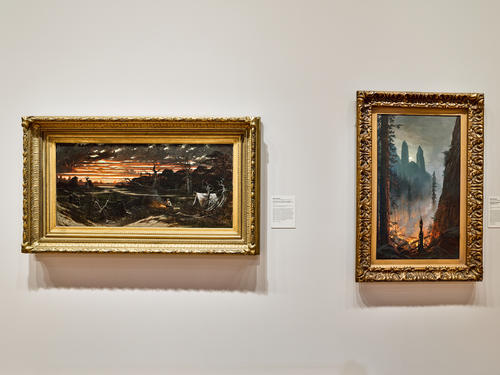
The exhibit continues through a display of Tavernier's landscapes, particularly some stunning vertical pieces showcasing the Redwood trees of the Bay Area. One exceptional work in the exhibit is a pastel piece, here on loan, titled Yosemite (Forest Fire in Moonlit Landscape). Tavernier does an astounding job playing with the detail of light in all of his work. It’s a hard thing to capture in pastels, but he was a master of the medium. He arguably introduced “the pastel craze” to San Francisco artists in his time. As we mentioned in our review of the pastel art exhibit at Legion of Honor, it’s difficult to preserve pastel art, so it is often not on display in order to protect it, making this a special piece to get a chance to see in person.
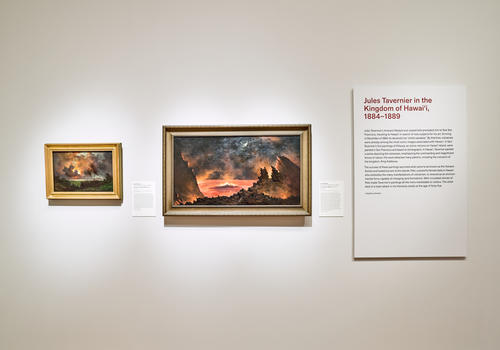
The exhibit ends with a few paintings from Tavernier’s later years in Hawaii. He painted volcanoes, and was inspired by the deity Pele. Again, we see the complicated story of his art. On one hand, he was sharing a very important part of indigenous history and culture. Additionally, he was capturing the image of nature changing as a direct result of US Imperialism. And yet, his work also helped to drive tourism to Hawaii, further exacerbating the very issue that he was depicting. It’s another version of the banker in the Roundhouse ceremony painting.
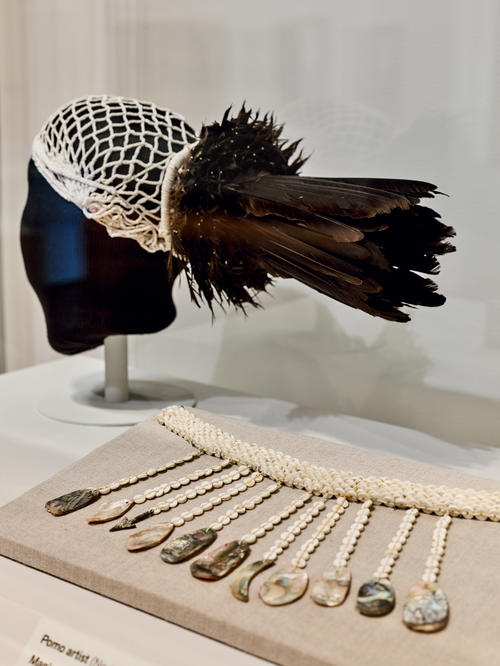
It was helpful to learn about his work within the larger context that includes the film, the basketry, and the regalia. It was also helpful to hear additional information from Robert Geary and Sherri Smith-Ferrie, who were able to speak about their experience of the art as members of the Pomo community. History is multi-dimensional. An artist can be both helpful and problematic. What time affords us is the opportunity to make corrections and enlarge the story. Given time, the Pomo people are finding new ways to work with the land, creating baskets for their community using the old traditions. Given time and space, the land has the potential for resilience and healing, if we can learn from the past and allow for that. This exhibit places Tavernier in his place, celebrating his stunning use of light and his unique perspective on the subject matter, while giving due space around it to works by the Pomo people.
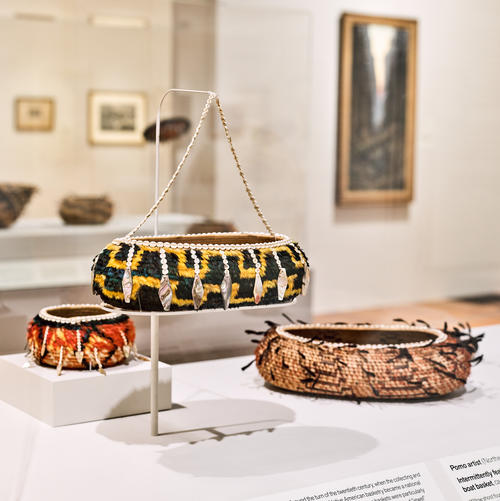
Jules Tavernier and the Elem Pomo is on exhibit at de Young museum December 18, 2021 – April 17, 2022. While there, be sure to check out the Patrick Kelly runway exhibit (through April 24, 2022) and catch the Judy Chicago retrospective on display only until January 9, 2022.
Photo credit for all images: Installation view of "Jules Tavernier and the Elem Pomo", de Young, San Francisco, 2021. Photograph by Randy Dodson, © Fine Arts Museums of San Francisco









